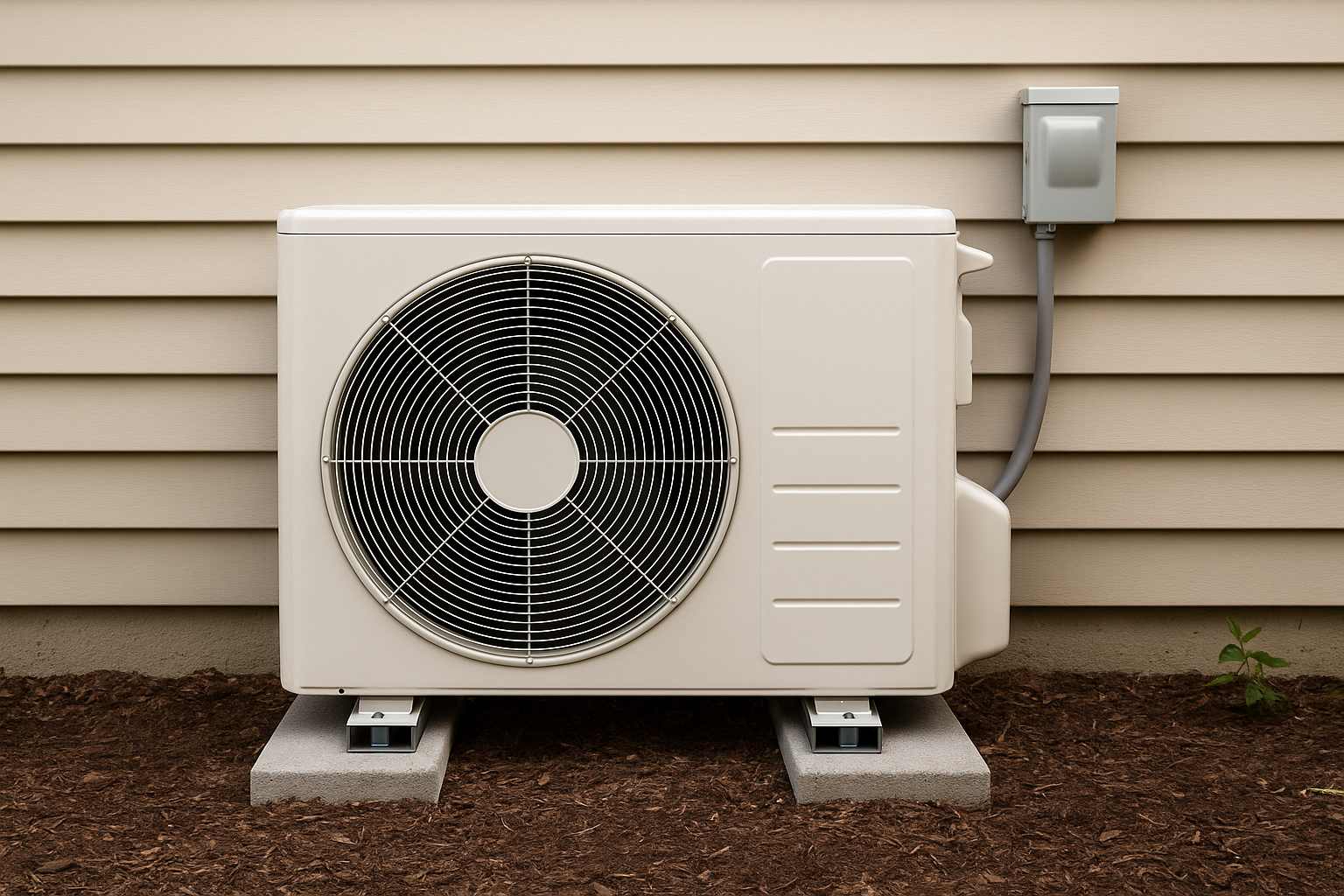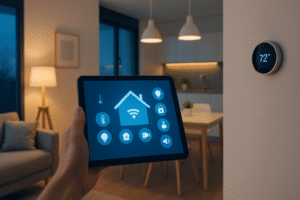It controls more than just temperature. It set the tone for your whole home. It keep you warm in winter and cool in summer. It also filter out dust pollen and moisture. It run every day even when you do not think about it.
Over time wear and tear slow it down. Parts loosen. Coils clog. Motors drag. Your system works longer just to meet the same settings. That extra work uses more power. It raises your electric bills without warning.
You may not notice right away. The air still feels okay. Then you hear a strange sound. Or one room stops cooling. Or the house starts to smell musty. These small problems often point to a larger issue.
An old unit can’t meet modern demands. It struggles to move air evenly. It lets allergens stay inside. It runs louder and less efficiently. These problems grow fast and hit your wallet hard.
A full upgrade gives you a clean start. It lowers your energy use. It restores comfort. It also protects your home from bigger repair costs later. If something doesn’t feel right, that system may be past its prime.
1. Uneven Temperatures in the House
2. Energy Bills Keep Rising
You didn’t change your habits. You didn’t use more power. Still, your bill went up. That’s a clear warning.
Old HVAC systems lose efficiency over time. Their motors grow weak. Their parts wear down. Coils and filters collect dirt. Air moves slower. The system runs longer just to reach the same temperature.
That long runtime burns more power. It pushes your energy bill higher each month. You may not notice at first. Then the increase becomes too big to ignore.
Compare your current bill to the same month last year. If the numbers jump but your lifestyle stayed the same, the system may be the problem.
Modern HVAC units use less energy. They cool and heat faster. They also meet newer efficiency standards. Some models even earn rebates or energy credits. That makes an upgrade easier on your budget.
Replacing your old system cuts waste. It lowers your monthly costs. It also keeps your home more comfortable without extra effort.
3. Too Many Repairs
You call your HVAC tech again. The fix doesn’t last. Another part breaks. Then the next one goes. That’s not just bad luck. That’s a system on its way out.
Old units break down often. Motors fail without warning. Wires overheat. Thermostats lose control. Each part wears out faster as the system ages.
You spend money to patch it. Then it fails again. The time between repairs keeps getting shorter. The bills keep growing. The stress builds every time your home feels uncomfortable.
You lose trust in your system. You start to worry when the weather changes. You wonder if it will make it through the season.
A new unit ends that cycle. It runs without issues. It gives you comfort you can count on. You stop spending on short-term fixes. You start enjoying long-term peace of mind.
4. System Age Over 10 Years
Your HVAC system may still run. But age changes how it works. Most systems start to decline after 10 years. Even if they turn on, they don’t perform like they used to.
Older units take longer to heat or cool. They struggle during extreme weather. They can’t keep up during heat waves or freezing nights. You feel the delay every time you adjust the thermostat.
These systems also use outdated refrigerants. Some are no longer made. Others cost more each year. That makes routine maintenance more expensive and harder to schedule.
Worn parts also create more noise. You may hear rattling grinding or humming. These sounds often signal deeper wear. They also make your home feel less peaceful.
New systems fix those problems. They start faster. They run quieter. They respond better to changing weather. They also meet new energy standards and reduce waste.
If your system passed the 10 year mark do not wait for it to fail. Replacing it now give you more control better comfort and lower long term cost.
5. Air Quality Feel Worse
Your home feels stuffy. Dust settles fast. You notice a musty smell. Allergies flare up more than before. These are signs your indoor air quality has dropped.
Your HVAC system should clean the air. It should trap dust, pollen, and other particles. It should also help manage humidity. When it fails at those tasks, the air inside becomes harder to breathe.
Old systems struggle to move air. Filters clog. Ducts collect dirt. Moisture builds up. That creates the perfect space for mold and allergens to spread.
You may have tried quick fixes. You replaced filters. You cleaned vents. You ran a dehumidifier. But nothing changed. The problem likely runs deeper.
A modern HVAC unit solves that issue. It filters more air on each cycle. It balances humidity better. It pushes clean air into every room.
Cleaner air means fewer health problems. It also means a fresher, more comfortable home. If your air feels heavy or dirty, your system may no longer protect your health.
6. Strange Noises or Smells
Your HVAC system should run quietly. It should never surprise you with odd sounds or strange smells. If it does, something’s wrong.
You might hear banging or grinding. You might catch a buzzing noise during each cycle. These sounds often mean loose parts, bad bearings, or motor failure.
Then the smells start. A burning scent can point to overheating wires or dust on hot parts. A musty odor may mean mold inside the ducts or unit. Both signs warn of serious issues that can’t wait.
You may fix one part, only to hear the noise again next week. You may clean the system, but the smell returns. When these problems repeat, the system is likely too far gone.
Each repair takes more time and money. The comfort doesn’t last. The stress keeps building.
A new system fixes all of it at once. It runs smooth. It runs quiet. It runs clean. If you hear or smell warning signs again and again, stop fixing. Start replacing.
7. Your Thermostat Feels Outdated
Your thermostat sets the rules for your HVAC system. If it’s outdated, your whole system suffers. Old models offer limited control. They don’t adjust to your schedule. They don’t connect to your phone. That leads to wasted energy and higher bills.
You may find yourself constantly adjusting the temperature. You may leave the house and forget to turn it down. You lose comfort and pay more than you should.
New thermostats fix that. They let you set schedules. They learn your routine. They track your energy use in real time. You can make change from your phone tablet or even a voice command.
A smart thermostat work best with a modern HVAC system. Together they keep your home comfortable without overworking the unit. You get more control and more saving.
If your thermostat look old or lack smart feature it might be time to upgrade. Small change here can bring big improvements every day.
Final Word
Most people wait too long. They ignore the early signs. They hope the system pulls through. Then one day it quits. That moment always comes at the worst time.
Your system might fail in a summer heatwave. It might die during a freezing night. You rush to fix it. You scramble to find a technician. You pay more because of the urgency. You settle for whatever system is in stock.
That stress can be avoided.
You don’t need to wait for a total breakdown. Your HVAC system sends clear warnings. Uneven temperatures. High energy bills. Dusty air. Loud noises. Frequent repairs. Each issue adds pressure. Each one drains your time, comfort, and money.
A modern HVAC system does more than run. It improves your air. It lowers your bills. It keeps your home steady, quiet, and comfortable every day. It also gives you more control over your environment and budget.
Upgrading now gives you freedom. You choose your system on your terms. You compare models. You take advantage of rebates. You avoid emergency costs. You protect your home before problems grow worse.
Your comfort matters. So does your peace of mind. If your system feel old tired or unreliable now is the right time. Don’t wait until it fails. Get ahead. Plan smart. Upgrade early.




